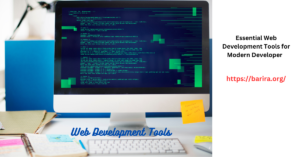Introduction to Web Development
Web development is a dynamic field that combines creativity and technical skills to build and maintain websites and web applications. Whether you’re curious about creating your own blog, setting up an online store, or developing complex web applications, understanding the basics of web development is your first step towards mastering this essential digital skill.
Understanding the Basics: What Web Development Entails
At its core, web development involves the creation of web-based solutions that run on browsers. It includes everything from simple static web pages to complex web applications. Web development is typically divided into two main areas: front-end development (client-side) and back-end development (server-side). Front-end developers focus on what users interact with directly in the browser, while back-end developers deal with the server, database, and application logic.
Key Technologies in Web Development
Front-End Technologies
- HTML (HyperText Markup Language): The backbone of any website, used to create the structure of web pages.
- CSS (Cascading Style Sheets): Responsible for the style and layout of web pages.
- JavaScript: Adds interactivity to web pages and is increasingly used for full-scale application development.
Back-End Technologies
- Python: Known for its readability and efficiency, often used with frameworks like Django and Flask.
- JavaScript (Node.js): Allows developers to use JavaScript on the server-side.
- PHP: A popular scripting language that powers many dynamic websites.
The Process of Web Development
Web development starts with planning, followed by design, development, testing, and deployment. Each phase plays a crucial role in ensuring that the final product meets user needs and functions smoothly.
- Planning: Defining the project’s scope and creating a roadmap.
- Design: Crafting the visual look and feel of the web application.
- Development: Writing the actual code and building functionalities.
- Testing: Checking for bugs and usability issues.
- Deployment: Launching the application for public use.
Choosing the Right Tools and Technologies
Selecting the appropriate tools and technologies is critical for efficient and effective web development. Beginners should start with basic tools like text editors (e.g., VS Code or Sublime Text) and gradually explore more advanced integrated development environments (IDEs) and tools as they gain more experience.
Building Your First Web Project
Starting with a simple project can help solidify your understanding of web development concepts. A personal portfolio website, for example, can be an excellent project to begin with. It allows you to practice HTML, CSS, and JavaScript, and gives you something tangible to showcase your skills.
Tips for Aspiring Web Developers
- Practice Regularly: Like any skill, web development improves with practice.
- Learn from Others: Participate in coding communities and collaborate with other developers.
- Stay Updated: The tech field evolves rapidly, so keeping up with the latest trends and technologies is crucial.
Conclusion and Next Steps
Web development is a rewarding field offering numerous opportunities for creative and technical growth. By understanding the basics outlined in this guide, you’re well on your way to becoming proficient in web development. Continue learning, experimenting, and building. Your journey as a web developer is just beginning, and the possibilities are endless Learn More.



